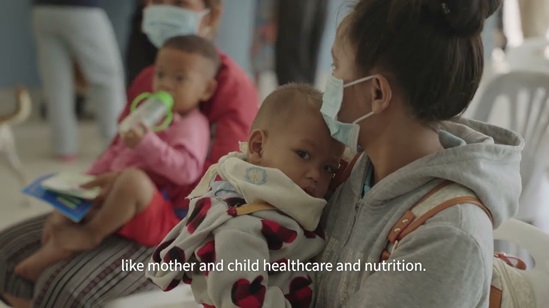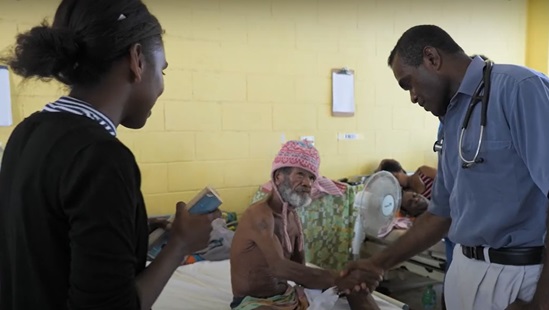A health worker tests a water sample from a well to certify if it is viable for consumption at Provincial Health Department in Pakse, Lao PDR.
Water, sanitation and hygiene (WASH)
Universal access to safe drinking water, sanitation and adequate hygiene (WASH) services is essential to population health, welfare and development. Preventable water-related diseases claim tens of thousands of lives in the Western Pacific Region.
The Region made considerable progress from 1990 to 2018, with most countries achieving global targets for drinking-water and sanitation. Still, nearly 90 million people in the Region do not use a basic drinking-water facility and more than 400 million do not use a basic sanitation facility.
Sufficient, affordable and safely managed drinking-water, sanitation, and improved hygiene behaviours can cut this number dramatically. In adopting the Sustainable Development Goals, the global community pledged to achieve universal coverage of safely managed drinking - water and sanitation services and to eradicate open defecation by 2030.
Contaminated drinking water, inadequate sanitation and poor hygiene are linked to the transmission of preventable diseases. This is true not only with the population in general but also particularly in healthcare facilities. Similarly, the inadequate management of urban, industrial and agricultural wastewater leads to major health hazards, due to direct exposure of humans to contamination or through microbial or chemical contamination of drinking watercourse.
Globally, 1.4 million deaths and 74 million disability-adjusted life-years (DALYs) could be prevented by access to clean water, adequate sanitation and proper hygiene. In 2019, more than 84 000 people died in the Western Pacific Region as a result of water-related diseases. Today, nearly 90 million individuals in the Western Pacific still lack access to safe drinking water facilities, and over 400 million people do not have access to basic sanitation services. Pacific island countries and areas, in particular, face significant challenges in terms of insufficient access to WASH resources.
Climate change and water security are interconnected challenges that cannot be separated. The effects of climate change are evident in various aspects of water, including its availability, accessibility, quality, and stability. Every year, approximately 3.5 million deaths globally occur as a result of environmental-related factors, which include diseases transmitted through contaminated water.
WHO in the Western Pacific works with Member States to improve access to safely managed drinking-water supply and sanitation, and good hygiene behaviours to protect health and well-being. WHO has been a major partner to relevant multilateral and bilateral agencies in the Region through organizing crucial high-level events and has facilitated important related international commitments.
The regional vision, For the Future, outlines ensuring good water, sanitation and hygiene management practice in health facilities as a key component to mitigate the impacts of climate and environmental change on the national health systems. This presents a high-level strategic framework for the development of actions to strengthen WASH services in health care facilities throughout the Region.
WHO works with countries to achieve the target of all health facilities having access to safely managed WASH services in the Region. Unfortunately, information about the status of WASH in healthcare facilities in the countries of Western Pacific Region is greatly missing. Efforts are being made to capture all the data exist in the Region, as well as to embed indicators for WASH in healthcare facilities into existing health monitoring systems to better inform the status.
Regional programmatic priorities also highlight on ensuring drinking water quality. WHO supports the establishment of water safety plans and household water treatment and safe storage in Member States. This includes developing national strategies and increasing the capacity on implementing safe drinking water programs based on WHO guidelines.







/teams/asia-pacific-centre-for-environment-and-health-in-wpr-(ace)/water-san-techs.tmb-549v.jpg?sfvrsn=5f8cbde7_1)

